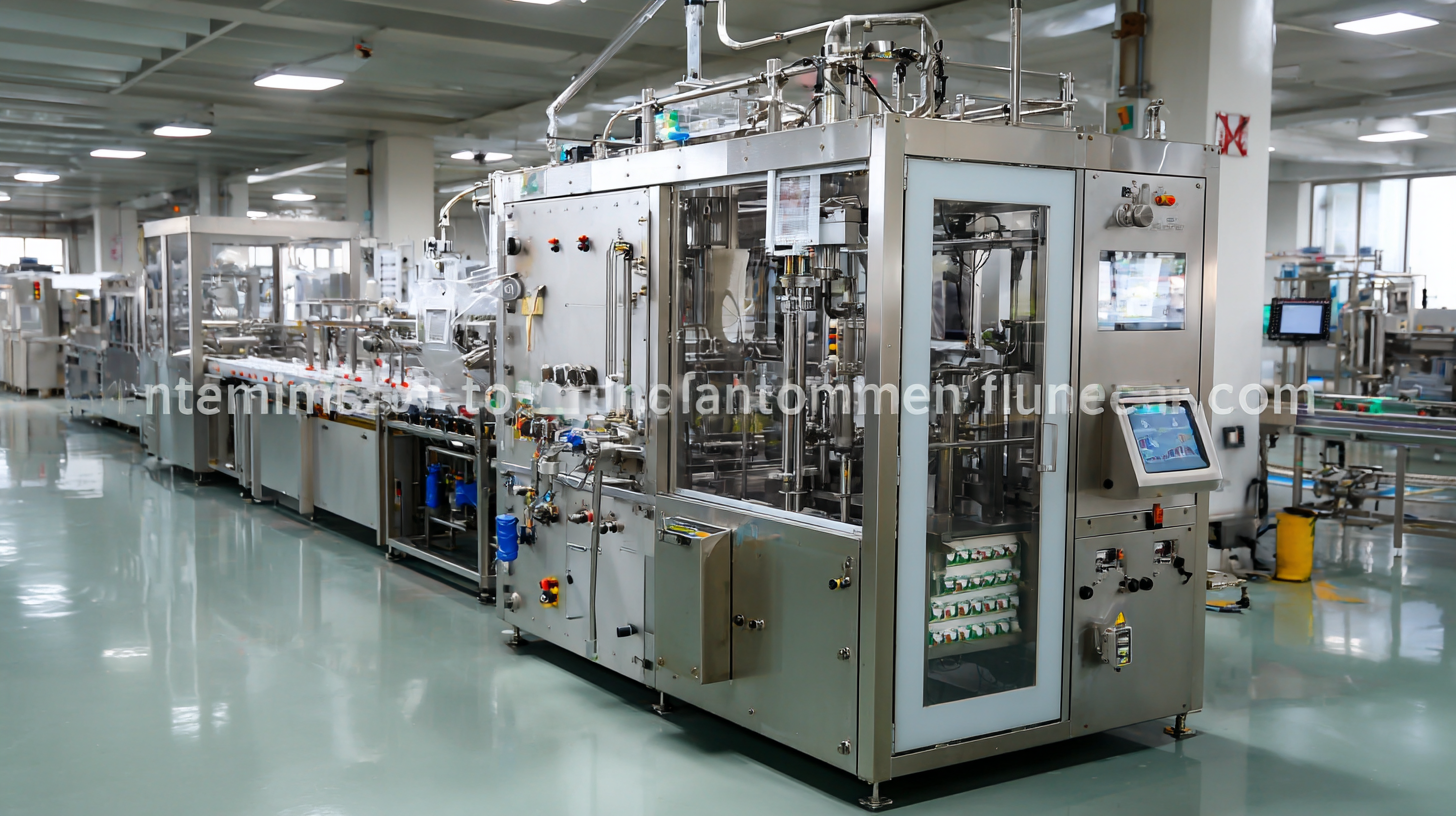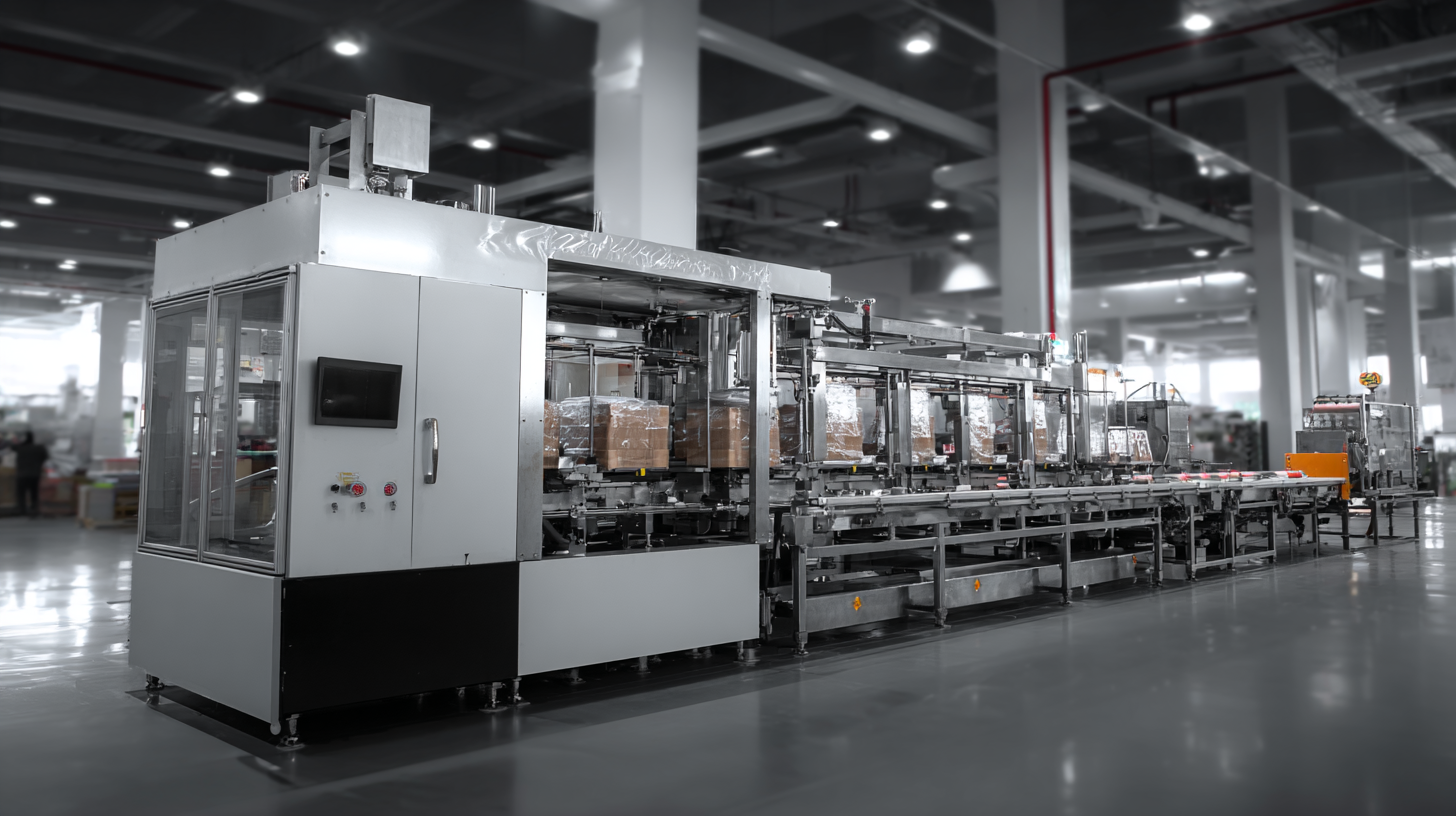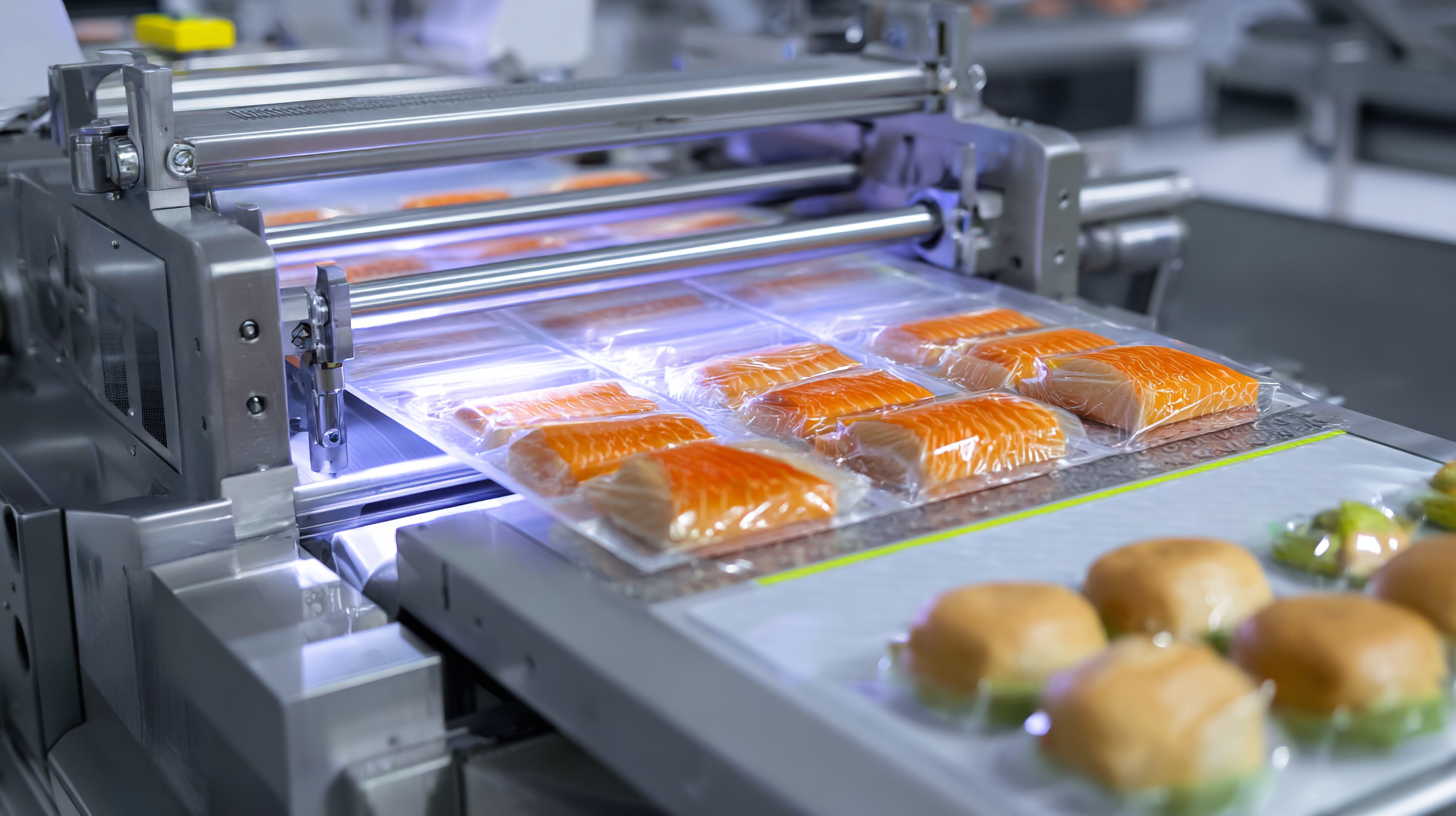Top Strategies for Choosing the Best Food Packing Machine for Your Business
In the highly competitive food industry, selecting the right food packing machine is paramount for businesses aiming to optimize efficiency and maintain product quality. According to a recent report by MarketsandMarkets, the global food packaging machinery market is expected to reach USD 47 billion by 2026, growing at a CAGR of 5.8% from 2021. This surge is driven by the increasing demand for packaged foods and the rising need for automation in production processes to meet consumer preferences. As manufacturers strive to enhance their operational capabilities, understanding the various types of food packing machines available and their specific functionalities becomes essential. With China positioning itself as a leader, providing high-quality machinery for worldwide distribution, businesses must carefully consider their options to ensure they invest in the most suitable equipment tailored to their unique needs.

Understanding Your Business Needs for Food Packing Machines
When considering the selection of food packing machines for your business, understanding your specific needs is paramount. The global liquid filling machines market is expected to grow significantly, projected to rise from $6.82 billion in 2025 to $10.39 billion by 2032, with a compound annual growth rate (CAGR) of 6.2%. This growth highlights the increasing demand for reliable and efficient packing solutions tailored to various food products. Identifying the types of products you plan to package—ranging from liquids to solid items—will help narrow down the choices that best fit your operational requirements.

Furthermore, as the food packaging market is anticipated to reach USD 714.16 billion by 2030, businesses must align their machine choices with this trend to remain competitive. Factors such as scalability, sustainability, and technological integration should be considered. For instance, the rising importance of sustainable practices in food packaging has led some companies to adopt advanced technologies that can offer eco-friendly solutions. By evaluating these aspects, businesses can strategically invest in the right equipment that not only meets current demands but also anticipates future market shifts.
Evaluating Different Types of Food Packing Machines Available
When choosing a food packing machine for your business, it's crucial to evaluate the different types of machines available in the market. A systematic literature review on industrial wastewater management highlights the importance of integrating efficient processes in production, which is directly relevant to packaging. For instance, food packing machines designed with eco-friendly features, such as those utilizing biodegradable polymers, can reduce the environmental impact and enhance the sustainability of food products.
Recent evaluations of packaging technologies have shown the effectiveness of chitosan-based films in extending the shelf life of perishable items. These films not only provide protection against microbial contamination but also align with growing consumer demands for safer and longer-lasting food storage solutions. In addition, the application of advanced modeling tools for packaging benefits underscores the significance of selecting machines that contribute positively to both product integrity and environmental sustainability.
Data indicates that embracing innovative packaging solutions can lead to improved efficiency and reduced waste, which are essential factors for modern food businesses aiming to stay competitive.
Key Features to Look for in a Food Packing Machine
When selecting the best food packing machine for your business, understanding key features is essential to ensure efficiency and compliance with industry standards. According to a recent report by MarketsandMarkets, the food packaging machinery market is projected to reach USD 50 billion by 2025, highlighting the increasing demand for advanced packaging solutions. Businesses must prioritize machines that offer automation capabilities, as automated systems can significantly reduce labor costs and minimize human error. Look for equipment that integrates easily with existing production lines, which can enhance productivity and streamline operations.
Another important feature is the machine's ability to handle a variety of packaging materials. Data from the Food Processing Association indicates that nearly 60% of food manufacturers are transitioning to sustainable packaging solutions, making it crucial for packing machines to accommodate eco-friendly options. Therefore, ensure the machine is compatible with various materials such as biodegradable films or recyclable containers.
**Tip 1:** Invest in machines with adjustable settings for different product sizes, enabling versatility in packaging options, which can cater to changing market demands.
**Tip 2:** Always consider after-sales service and support when selecting a machine, as prompt maintenance can prevent costly downtimes.
**Tip 3:** Evaluate the machine’s energy efficiency; according to energy reports, companies can save up to 30% on energy consumption with the right technology, directly enhancing profit margins.
Top Strategies for Choosing the Best Food Packing Machine
Cost Considerations When Choosing a Food Packing Machine
When selecting the best food packing machine for your business, cost considerations play a pivotal role in the decision-making process. It's crucial to define a budget that accommodates both initial investments and ongoing operational expenses. The upfront costs may include the price of the machine itself, installation fees, and any necessary training for staff. However, businesses should also factor in maintenance costs and the potential need for repairs, as these can significantly impact the total cost of ownership over time.
Additionally, the type of food products being packed can influence the choice of machinery and associated costs. For instance, different materials and packing methods require varying machinery specifications, which can range widely in price. It's essential to evaluate not only the initial expenditure but also the machine's efficiency and speed, as these traits can affect labor costs and product waste. A more costly machine that offers higher efficiency may ultimately result in lower operating costs, making it a wise investment despite a larger initial outlay. Balancing these factors will help businesses choose a food packing machine that maximizes value and meets their packaging needs effectively.

Ensuring Compliance and Safety Standards in Food Packaging
When selecting a food packing machine, ensuring compliance with safety standards is critical not only for protecting the business but also for safeguarding consumer health. Recent advisories, such as those by market supervision authorities in Taiyuan City, underscore the importance of checking product qualifications, storage conditions, and ingredient origin when purchasing processed foods. These steps are vital in mitigating food safety risks, especially amidst rising concerns over foodborne illnesses and contamination incidents.
Under the Food Safety Modernization Act (FSMA), which governs food production and distribution in the U.S., strict adherence to safety regulations is essential for all food manufacturers. Additionally, emerging trends such as the increased adoption of digital labeling indicate a shift towards transparency and traceability in food packaging. The global smart packaging market, projected to grow at a compound annual growth rate of 5.88% over the next decade, highlights the industry's commitment to utilizing technology for enhanced consumer safety. As companies navigate these regulations and innovations, choosing the right food packing machine becomes a pivotal factor in ensuring compliance and promoting overall food safety.
Top Strategies for Choosing the Best Food Packing Machine for Your Business - Ensuring Compliance and Safety Standards in Food Packaging
| Machine Type | Key Features | Compliance Certifications | Safety Standards | Average Cost (USD) |
|---|---|---|---|---|
| Automatic Vertical Form Fill Seal | Multi-lane filling, quick changeovers | ISO 22000, HACCP | ANSI/NSF standards | $50,000 - $75,000 |
| Semi-Automatic Tray Sealer | Easy operation, compact design | CE marking, FDA approval | OSHA compliance | $15,000 - $30,000 |
| Automated Carton Sealer | Adjustable settings, high throughput | ISO 9001, BRC | NIOSH standards | $25,000 - $50,000 |
| Vacuum Packing Machine | Preservation, customizable settings | FDA compliance, CE certification | UL listed | $3,000 - $10,000 |
| Labeling Machine | Flexible labeling options, high precision | FDA registered, ISO 14001 | ATEX Directive | $10,000 - $20,000 |
